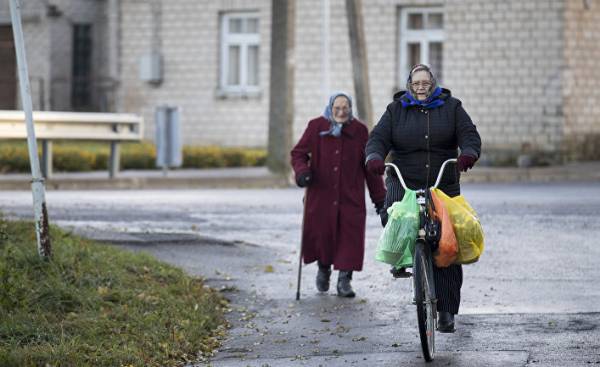
In 2081, the population of Europe will reach 518 million, seven million more compared with the number of European nationals this year. In Italy, however, we will be less than through 64 years population will decrease from 60 to 53 million. This follows from the forecasts of the European Union which do not take into account, however, in their estimates of migration flows, and look only at the statistical trends associated with fertility, index of fertility and mortality. In the case of Italy, therefore, declining birth rates and an aging population.
If we begin to study how to develop the pyramid age (we are talking about a chart showing the ratio of men and women in different age groups), we can note that in Europe is changing. From the site PopulationPyramid we took images relating to Europe and Italy in the year 2081. It is possible to estimate that in Italy almost 5% of the population from 75 to 85 years. In Europe, their number does not reach 4%. While the age group from 5 to 25 years in Europe, they take 7.5% Italy — 7% of the population. It is interesting that in Italy is celebrated fewer women as a percentage. In proportion, therefore, the problem of Italy is not associated with the percentage of youth that is not at odds with European indicators, and with the increasing life expectancy of older people. When comparing the two pyramids can be seen that the one which concerns our country, wider at the top. At the base of the pyramid we coincide with the indicators of Europe. How explain this fact demographers? The baby boom of the 70-ies, which was not followed by higher fertility rates, unlike other countries.
The Case Of Italy. According to the latest Istat data, the expected number of the population of Italy, according to the average estimated 58.6 million people in 2045 and the 53.7 million in 2065. The decline in population compared to year 2016 (60,7 million) will amount to 2.1 million inhabitants in 2025, and 7 million in 2065. Given the uncertainties inherent in demographic phenomena, the estimated number of the population in 2065 varies from a minimum of 46,1 million up to a maximum of 61,5 million. The probability of increase in population in 2065 is 7%.
According to the average forecasts, while in the South the decline in population is permanent and stable in nature, the centre and the North after the first 30 years with the forecast of a positive demographic balance characteristic progressive decline starting in 2045. The empirical probability that the population of the center and North of the country in 2065 will be more than today, is 31%, while in the South it is close to zero.
It seems, therefore, obvious weight shift of the population from the South to the centre and North of Italy. On the average, in 2065 in the Central and Northern parts of the country will live, 71% of residents compared to 66% today. In the South, compared with the current 34% of the population will be 29%.
Future fertility will not be sufficient to compensate for future mortality. The average estimated after a few years the natural mortality rate will reach 200 thousand people, and then cross the border 300 and 400 thousand people in the medium and long term.
The projected increase in average fertility from of 1.34 to 1.59 children per woman in the period from 2016 to 2065. However, increasing the level of uncertainty in the forecast period. The confidence interval provided for in 2065, is quite high, it fluctuates between 1.25 and of 1.93 children per woman.
The projected increase in life expectancy. By 2065, the average life expectancy will rise to 86.1 and 90.2 years for men and women respectively (in 2015, the average life expectancy for men was 80.1 and women of 84.6 years). The confidence level ranges from us $ 84.1 to 88.2 years for males and between and of 87.9 and 92.7 years for women.
In the estimates regarding the number of people in Italy the decisive contribution of the forecast of migration from abroad. Provides a positive migration balance with other countries, on average, it is higher by 150 thousand people per year (133 thousand in 2015), although on these figures there is a high level of uncertainty. Not ruled out the possibility, albeit low that in the long term, this balance can become negative.






